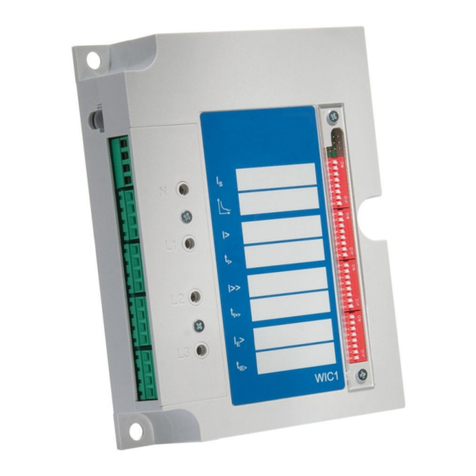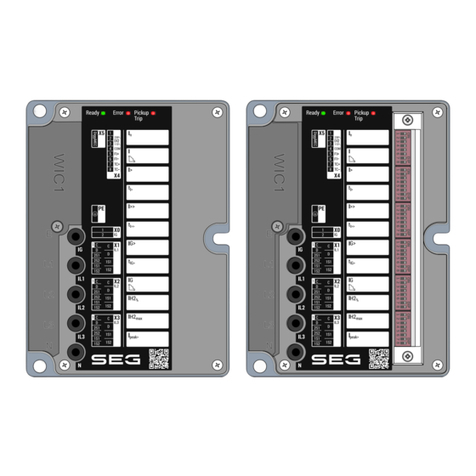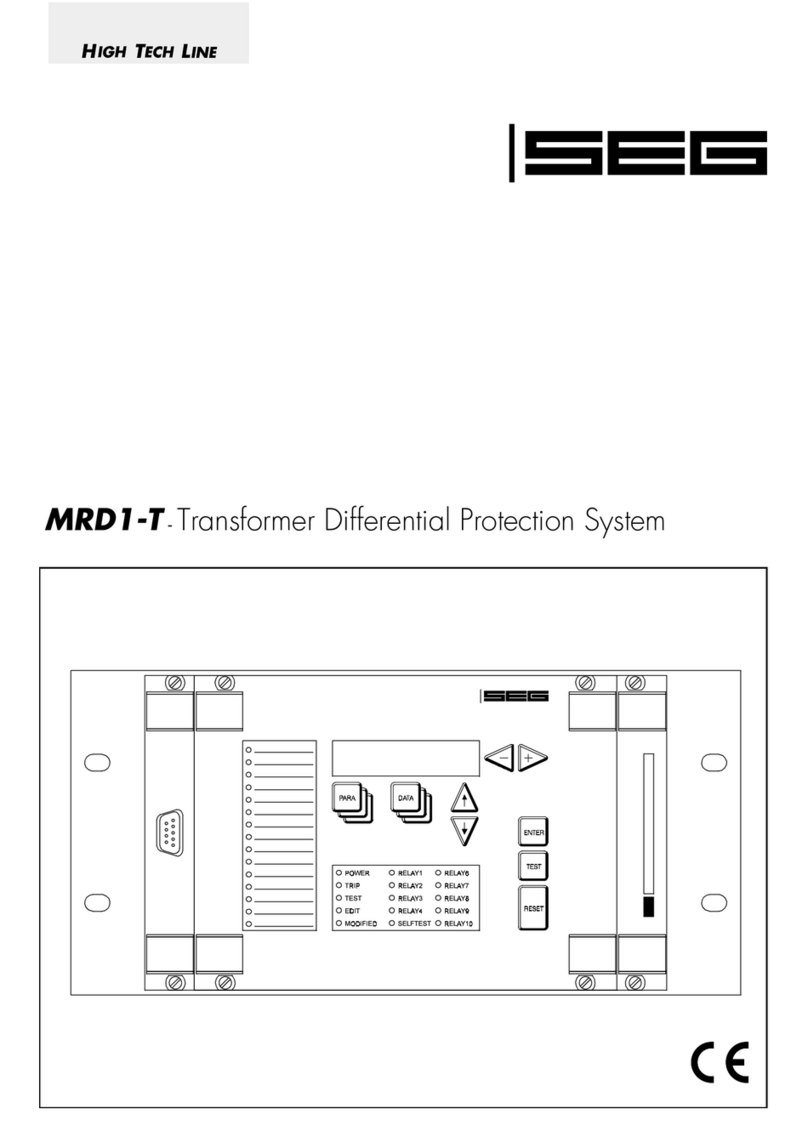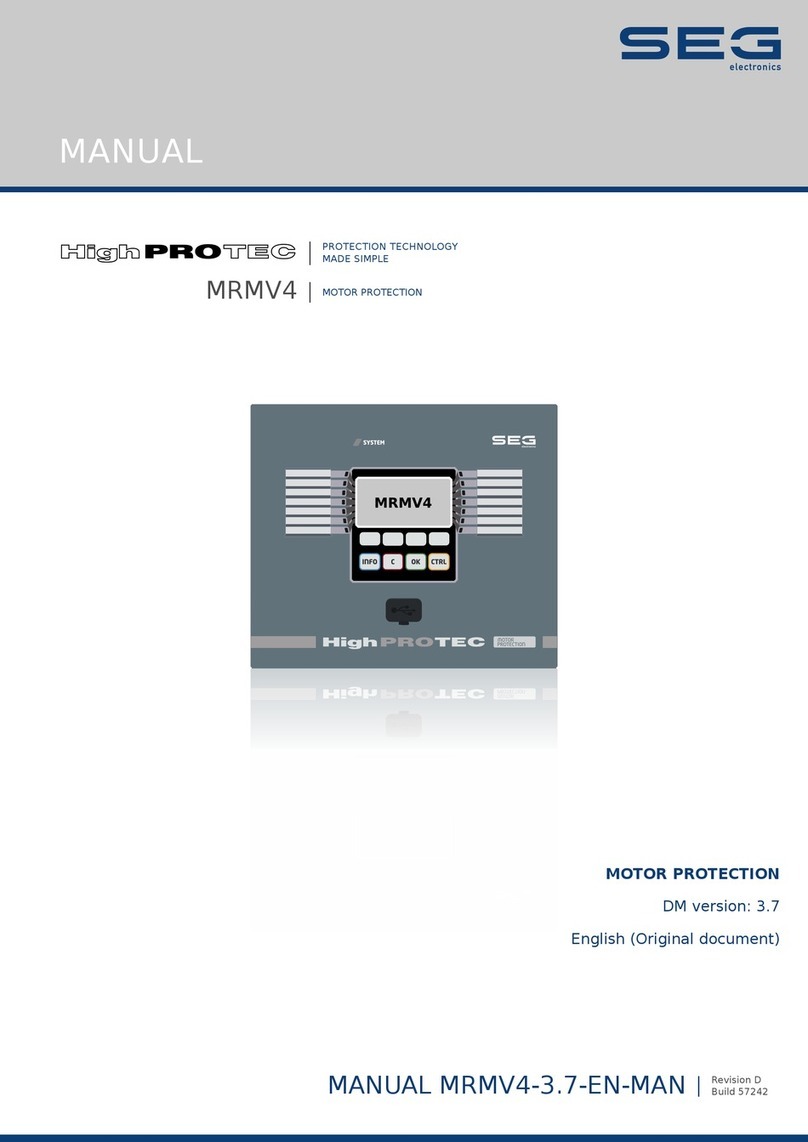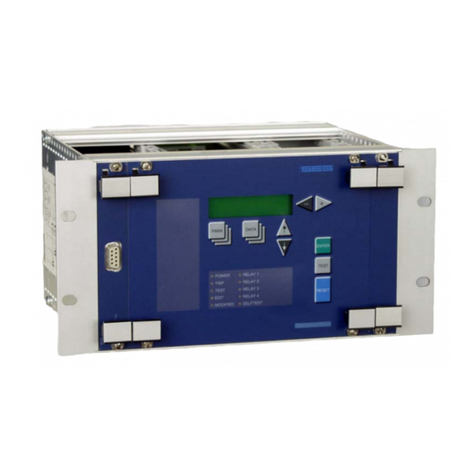
10 TB MRI1-IU 10.98 E
5.2.10 Blocking the protection functions
and assignment of the output
relays
Blocking the protection functions:
The blocking function of the MRI1-IU can be set
according to requirement. By applying the aux.
voltage to D8/E8, the functions chosen by the user
are blocked. Setting of the parameter should be done
as follows:
• When pressing push buttons <ENTER> and <TRIP>
at the same time, message "BLOC" is displayed (i.e.
the respective function is blocked) or "NO_B"
(i.e. the respective function is not blocked). The LED
allocated to the first protection function I> lights red.
• By pressing push buttons <+> <-> the value
displayed can be changed.
• The changed value is stored by pressing <ENTER>
and entering the password.
• By pressing the <SELECT/RESET> push button, any
further protection function which can be blocked is
displayed.
• Thereafter the blocking menu is left by pressing
<SELECT/RESET> again.
Function Display LED/Colour
I> Overcurrent
(Low set)
NO_B I> yellow
I>> Overcurrent
(High set)
BLOC I>> yellow
Table 5.3: Default settings of blocking functions
Assignment of the output relays:
The relay has five output relays. The fifth output relay is
provided as permanent alarm relay for self supervision
is normally on. Output relays 1 - 4 are normally off
and can be assigned as alarm or tripping relays to the
current functions which can either be done by using
the push buttons on the front plate or via serial
interface RS485. The assignment of the output relays is
similar to the setting of parameters, however, only in
the assignment mode. The assignment mode can be
reached only via the blocking mode.
By pressing push button <SELECT/RESET> in blocking
mode again, the assignment mode is selected.
The relays are assigned as follows: LEDs I>, I>>, are
two-coloured and light up green when the output
relays are assigned as alarm relays and red as
tripping relays.
Definition:
Alarm relays are activated at pickup.
Tripping relays are only activated after elapse of the
tripping delay.
After the assignment mode has been activated, first
LED I> lights up green. Now one or several of the four
output relays can be assigned to current element I> as
alarm relays. At the same time the selected alarm
relays for frequency element 1 are indicated on the
display. Indication "1_ _ _" means that output relay 1
is assigned to this current element. When the display
shows "_ _ _ _", no alarm relay is assigned to this
current element. The assignment of output relays 1 - 4
to the current elements can be changed by pressing
<+> and <-> push buttons. The selected assignment
can be stored by pressing push button <ENTER> and
subsequent input of the password. By pressing push
button <SELECT/RESET>, LED I> lights up red. The
output relays can now be assigned to this current
element as tripping relays.
Relays 1 - 4 are selected in the same way as
described before. By repeatedly pressing of the
<SELECT/RESET> push button and assignment of the
relays all elements can be assigned separately to the
relays. The assignment mode can be terminated at any
time by pressing the <SELECT/RESET> push button for
some time (abt. 3 s).
Note:
• The function of jumper J2 described in general
description "MR Digital Multifunctional Relays" has
no function. For relays without assignment mode
this jumper is used for parameter setting of alarm
relays (activation at pickup or tripping).
• A form is attached to this description where the
setting requested by the customer can be filled-in.
This form is prepared for telefax transmission and
can be used for your own reference as well as for
telephone queries.
Relay function Output relays Display- Lighted LED
1234
indication
I> alarm X _ 2 _ _ I>: green
tripping X 1 _ _ _ tI>: red
I>> alarm X _ _ 3 _ I>>: green
tripping X 1 _ _ _ tI>>: red
Table 5.4: Example of assignment matrix of the output relay (default settings).






